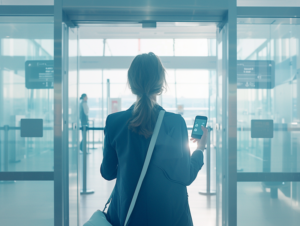A contentious amendment to the Federal Aviation Administration reauthorization bill, introduced by Senators Jeff Merkley and John Kennedy, aims to significantly restrict the use of automated facial matching and other biometric technologies by the Transportation Security Administration (TSA) at airport security checkpoints.

The technology is currently used at numerous major airports and includes tools such as the CAT-2 machines and TSA PreCheck’s Touchless ID system, which are designed to speed up and secure the passenger screening process.
The U.S. Travel Association, along with various officials from TSA and Delta Air Lines, oppose the amendment. They argue that biometric technologies enhance security, reduce screening times, and improve the overall travel experience. And they warn that prohibiting these technologies would lead to longer wait times at airports, decrease security efficiency, and result in financial losses regarding already invested taxpayer funds.
Former House Homeland Security Committee Ranking Member John Katko also voiced his frustration with the amendment, as TravelPulse reports. “I spent a significant portion of my time in Congress on the House Homeland Security Committee focused on strengthening aviation security at airports nationwide,” Katko said. “A vital piece of that effort is the increased use of biometric technology at security checkpoints… To abandon biometric technology and the progress we have made would make airports less safe. I strongly oppose this proposal.”
Supporters of the amendment, however, are concerned about privacy and the implications of widespread biometric surveillance. The debate highlights a significant tension between advancing security technology and protecting individual privacy rights.
The proposed amendment is set to undergo a series of legislative steps before potentially becoming law. Typically, it would first be reviewed and possibly altered in Senate committees that focus on relevant issues like transportation and security. If it clears the committee stage, it will be debated and voted on by the full Senate. Then it moves to the House of Representatives for a similar process of debate and voting. Differences between the Senate and House versions would need to be reconciled through a conference committee.
Finally, the unified bill would be sent to the President, who could sign it into law or veto it. The process involves multiple opportunities for both refinement and rejection, making the amendment’s future uncertain as it faces both support and opposition.
Sources: TTW, TravelPulse
–
April 26, 2024 – by Cass Kennedy








Follow Us